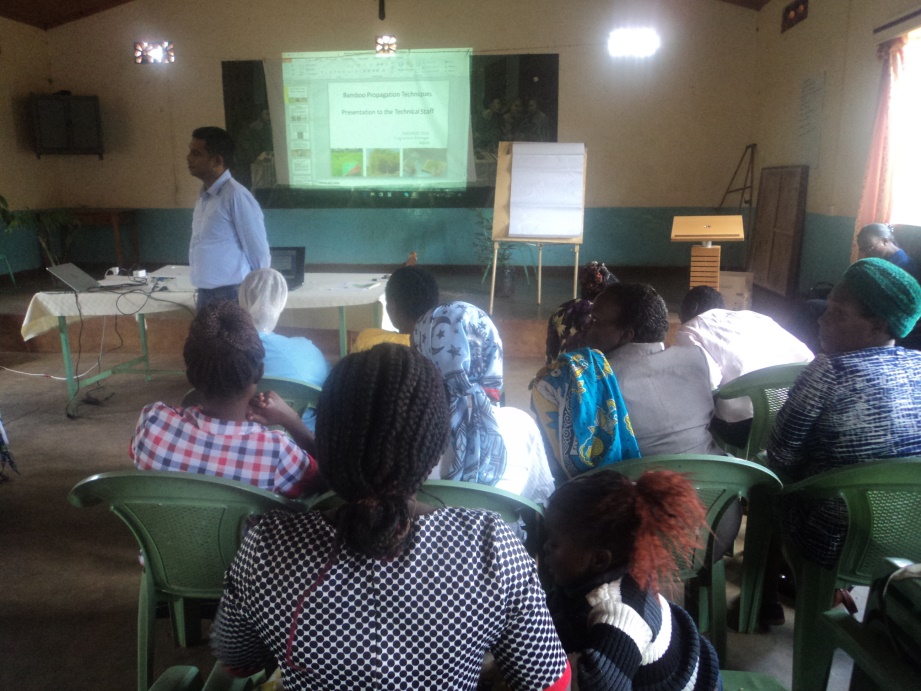GBM Blog
Women Groups in Murang’a Embrace Bamboo as a Renewable Resource



The Green Belt Movement is implementing a project titled “Bamboo integration in Aberdare Water- tower, Kenya for effective watershed restoration and livelihoods improvement” as an integrated community empowerment intervention targets grassroots communities’ adjacent to the Aberdares water tower in upper Tana - Athi watershed within Murang’a County. The project is funded by International Network for Bamboo and Rattan (INBAR).
The watershed has huge ecological services and economic benefits to the area that includes; support to prime agricultural areas, hydropower output, supplies of national water, refuge to endemic flora and fauna and indigenous biodiversity.
The importance of Mathioyawatershed in sustaining ecological processes and meeting diverse human needs throughout the region cannot be overstated. However, the watershed is facing multi-faceted threats both anthropogenic and climate induced that are hindering its ecological integrity. The ultimate goal of this project is geared towards sensitizing communities on the need for protection of biodiversity as well as providing viable alternatives to exploitation of forests and sustainable energy using bamboo biomass.
At a step in realizing this goal, The Green Belt Movement conducted community environmental and empowerment training in Maragua. The comprehensive training on the environmental and economic importance of bamboo, propagation, bamboo production and its potential was held from 19th to 21st July 2017 in Maragua, Murang’a County. Bamboo cultivation at grassroots levels in Kenya is riddled with rudimentary skills and in certain incidences complete lack of knowledge on seedlings production (vegetative or direct seeding) and nursery management techniques.
Community leaders from 5 GBM tree nursery women groups participated in the three day programme facilitated and supported a team from GBM, INBAR and KEFRI.

The training aimed at making bamboo affordable to communities by training Community Trainers of Trainees (TOTs) on how to propagate Bamboo using different methods.
21 women leaders were drawn from Utheri wa Kamuiru, Mataka Majoice, Makandu, Mururi and Makiriba Wendani Tree Nursery Groups.The 5 groups will start bamboo nurseries in their villages and act as training sites for other community members. Practical sessions were conducted to enable the women gain skills on different propagation methods and also be able to train other community group members. In these sessions, different methods of extracting vegetative propagation materials were demonstrated including the use of offsets, stem cutting, branch cutting, use of rhizome banks, macro proliferation techniques and stem laying methods. Mature and healthy clumps within the farms were identified for experimentations.
 The entire training programme was concluded at Kamuiru tree nursery where demonstrations were conducted on how to raise seedlings using different vegetative materials that had just been extracted.
The entire training programme was concluded at Kamuiru tree nursery where demonstrations were conducted on how to raise seedlings using different vegetative materials that had just been extracted.
The women were very excited to learn the new skills and expressed their interest to start the nurseries.

